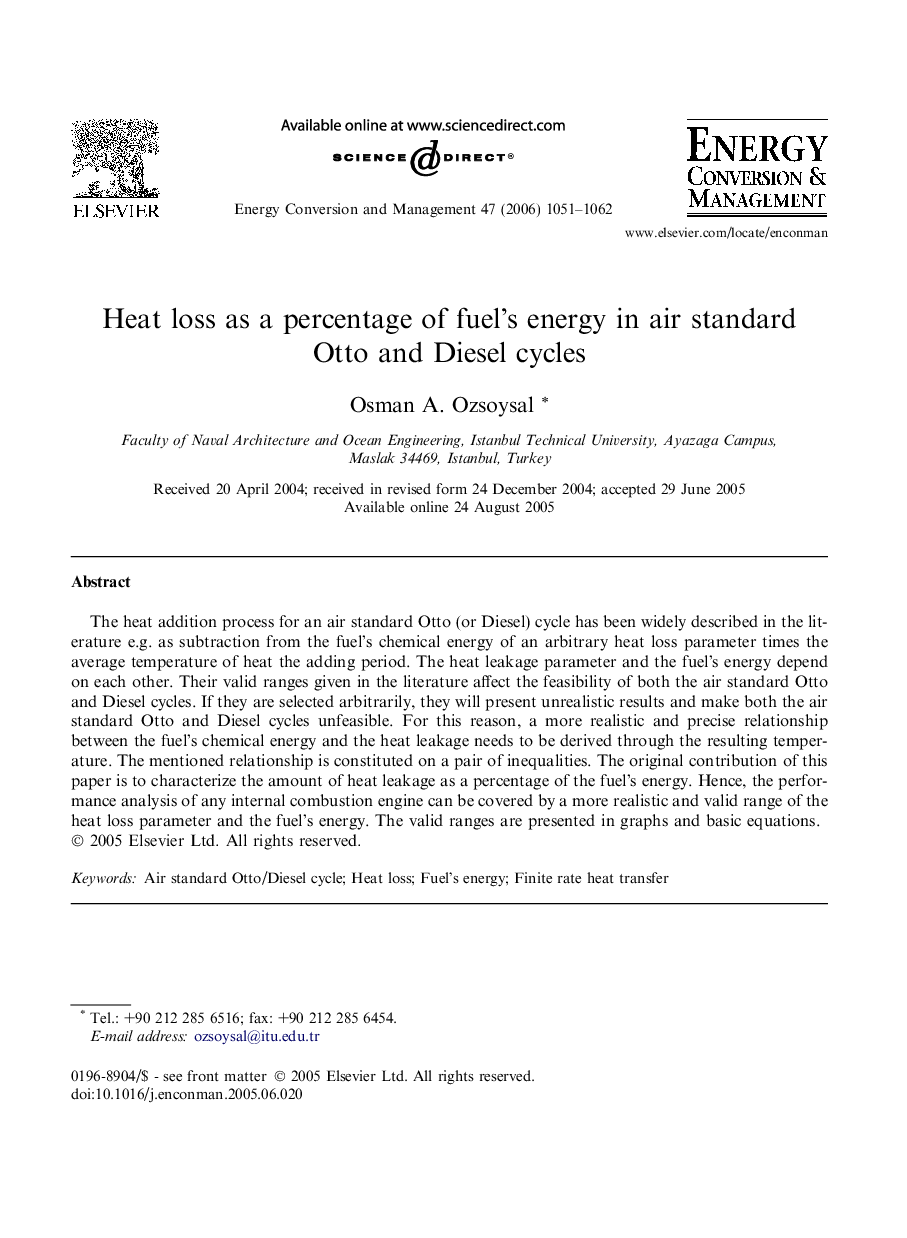| Article ID | Journal | Published Year | Pages | File Type |
|---|---|---|---|---|
| 762426 | Energy Conversion and Management | 2006 | 12 Pages |
The heat addition process for an air standard Otto (or Diesel) cycle has been widely described in the literature e.g. as subtraction from the fuel’s chemical energy of an arbitrary heat loss parameter times the average temperature of heat the adding period. The heat leakage parameter and the fuel’s energy depend on each other. Their valid ranges given in the literature affect the feasibility of both the air standard Otto and Diesel cycles. If they are selected arbitrarily, they will present unrealistic results and make both the air standard Otto and Diesel cycles unfeasible. For this reason, a more realistic and precise relationship between the fuel’s chemical energy and the heat leakage needs to be derived through the resulting temperature. The mentioned relationship is constituted on a pair of inequalities. The original contribution of this paper is to characterize the amount of heat leakage as a percentage of the fuel’s energy. Hence, the performance analysis of any internal combustion engine can be covered by a more realistic and valid range of the heat loss parameter and the fuel’s energy. The valid ranges are presented in graphs and basic equations.
